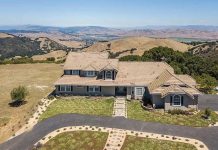Rights for
conservation
easements
By Patrick Casey
Lombardo and Gilles
Rights for
conservation
easements
By Patrick Casey
Lombardo and Gilles
In the past few years, there has been increasing public focus on preserving agricultural land in its current state, whether it be for row crops or range lands. For differing reasons, some landowners and environmental groups do not want certain land developed and would rather preserve it for agricultural use or as open space.
In addition, some landowners want to keep the agricultural nature of their land for future generations in order to preserve a family legacy. One method to achieve this goal is through the use of a conservation easement.
Conservation easements are a way of preserving the agricultural nature of land while obtaining certain tax benefits and current income. An easement is granted to a third party to prevent the property from being developed or used for a non-permitted purposes. There are various conservation easements in San Benito County that are held by different land trusts, such as the California Rangeland Trust and The Nature Conservancy.
A conservation easement is established by a landowner either selling or transferring certain development rights to his or her property to a third party. The landowner is then restricted in his future uses of the property, which may include restrictions on constructing buildings, subdividing the land, timber harvesting or other such activities. The landowner still owns his or her land and can continue to use the property for growing crops, cattle ranching or other similar activities.
The landowner can sell a conservation easement to a qualified easement holder and receive compensation for it, which will be a matter of negotiation between the landowner and the easement holder. The landowner can also donate a conservation easement and receive a charitable contribution deduction based upon the reduced value of the land (which needs to be determined by a qualified appraiser). The specific terms and conditions of the conservation easement must be carefully negotiated between the landowner and the easement holder.
There are only certain organizations that can receive and hold a conservation easement in order to validly establish a conservation easement. The first type of easement holder is a governmental entity such as the State of California or one of its respective agencies that is authorized to hold, monitor and enforce conservation easements. The second type of valid organization is a tax exempt 501(c)(3) organization whose purpose is to receive and hold conservation easements. Examples of these organizations include the Ag Land Trust, the Big Sur Land Trust, the Nature Conservancy and the California Rangeland Trust. In selecting a conservation easement holder, it is imperative that the landowner must be comfortable with who is going to hold the easement and that both parties have a good understanding with respect to the purposes and limitations of the easement. The most important element is trust and understanding between the landowner and the easement holder. Only if the landowner and the easement holder understand and clearly agree upon the scope and limitations of the conservation easement will the landowner be able to continue to use the land for agricultural purposes without getting into protracted (and expensive) disputes with the easement holder.
In order for a conservation easement to be valid, it must be “exclusively for conservation purposes.” This means that the conservation easement must meet one of the following four tests: (i) to conserve land areas for outdoor recreation by, or education of, the general public; (ii) to protect relatively natural habitat of fish, wildlife or plants; (iii) to preserve a historically important land area or a certified historic structure; or (iv) to preserve open space that is pursuant to a clearly delineated government policy (which exists in California) and that yields a significant public benefit, or for the scenic enjoyment of the general public and that will yield a significant public benefit. These are fairly specific tests and any landowner considering a conservation easement should consult with an attorney to address these matters.
This column is the work product of Lombardo & Gilles, LLP, which has offices in Hollister and Salinas. Patrick Casey is an attorney with Lombardo & Gilles, LLP. You may contact the author at 1-888-757-2444 or email to Pa*****@****il.com. Mail your questions to Patrick Casey, It’s the Law, c/o The Pinnacle, 380 San Benito St., Hollister, CA 95023.









